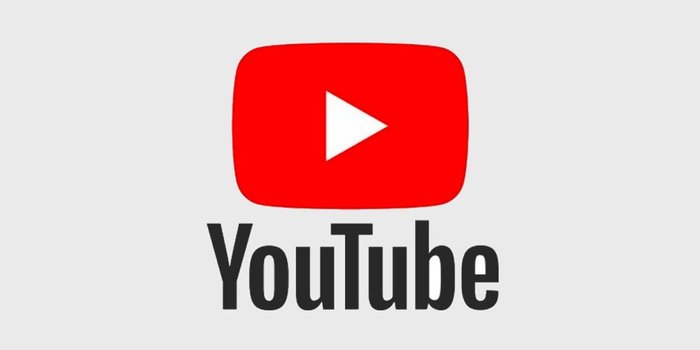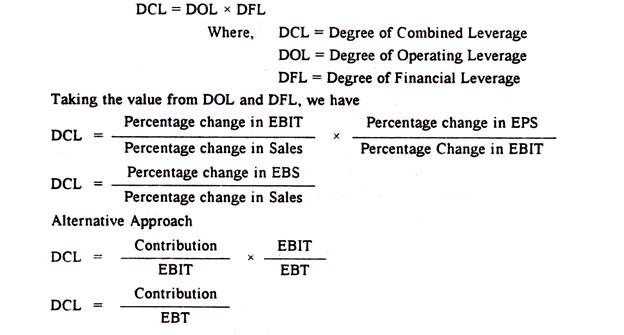Cost Push Inflation and Demand Pull Inflation
Contents
Whereas Keynesians explain the emergence of excess demand due to the increase in autonomous expenditure, independent of any increase in money supply. Friedman explains that inflation is caused by proportionately greater increase in money supply than the increase in aggregate output. Increase in wages – An increase in demand-pull inflation that causes the general rise in price levels may also make the companies pay more salaries. If companies do not increase the wages of their staff, it shall not be good for productivity and morale. Hence, in times of rising inflation, employers tend to increase employees’ salaries to help them match the increased standard of living brought about by inflation.

To illustrate the above point, let us assume that the government wants to use more of national output than the ordinary functioning of the system provides through taxes and loans from the public. If the government is insistent on securing additional resources, it will get them in one way or another—by issuing currency or by borrowing from the central bank or demand pull inflation happens due to from commercial banks. Demand Pull Inflation involves inflation rising as real Gross Domestic Product rises and unemployment falls, as the economy moves along the Phillips Curve. Demand Pull Inflation is commonly described as “too much money chasing too few goods”. But, eventually, higher consumer demand may outpace production capacity, causing inflation.
thoughts on “Demand-pull inflation”
On the other hand, monetarists explain the emergence of excess demand and the resultant rise in prices on account of the increase in money supply in the economy. To quote Friedman, “Inflation is always and everywhere a monetary phenomenon……. And can be produced only by a more rapid increase in the quantity of money than in output. When the government spends money, it buys products from businesses and pays wages to public employees. If the government increases spending, the aggregate demand for goods and services goes up.

This in turn lowers demand, allowing producers to catch up with supply and restoring balance. Demand-pull inflation occurs when there is a mismatch between supply and demand in an economy. Demand-pull can be caused by a variety of factors such as money printing, government purchases, exchange rates, taxes, a growing economy, and/or technology. Money Printing – Central banks print money in order to stimulate their economy. Through various types of exchanges, this money ends up with consumers who then have more spending power, a factor that already drives inflation. However, when implemented in isolation, money printing can pose a threat to an economy, especially when used to finance things like government grants.
When looking at how to control demand-pull inflation, it’s important to consider the various causes to choose the best course of action. Today’s global economy also helps keep demand-pull inflation in check, as consumers have access to an international marketplace of manufactured goods at varying prices. Let’s take the information we have learned about demand-pull inflation and apply it to an example.
Examples of Demand-Pull Inflation
This leads to less spending power which causes deflationary pressures on wages and prices. When fiscal policy is used to stimulate the economy during a recession, it has two main impacts on inflation. The first impact is called “demand-pull inflation.” This occurs when there’s more demand for goods than available supply. This leads to higher prices as sellers need to make up for their lack of supplies by raising prices instead. This drives the demand for Chipped’s microchip up and in turn, causes them to need to increase prices in order to keep up with the new demand. This could cause the original widgets to increase in price again because of this demand because Widgetized is paying these increased costs due to the demand they actually caused.
When this happens, businesses will need to increase prices in order to balance supply with demand. Demand-pull inflation can result when this happens because consumers will be willing to pay more for goods and services than before as they have access to more money with which to make purchases. As the population grows, there is an increased demand for goods and services.
On the other hand, the Consumer Price Index measures changes in the overall price level of a group of consumer items. So basically, demand-pull inflation happens when a request for services and goods exceeds the available supply. Both Cost-Push and Demand-Pull Inflation can lead to higher prices. AD represents aggregate demand for or aggregate expenditure on goods and services which is composed of consumption demand and investment demand . A depreciation of the exchange rate increases the price of imports and reduces the price of a country’s exports.
- When real estate prices collapsed, the result was a deep recession.
- It’s important to understand this phenomenon so we can take steps to avoid it.
- Demand-pull inflation is caused when the need for services and goods exceeds the available supply.
- This information is educational, and is not an offer to sell or a solicitation of an offer to buy any security.
This naturally fuels the inflationary cycle in that more spending power means more business turnover. This tends to result in rising employment, which ultimately means more general growth. Additionally, with further regard to taxes, governments can hedge the economy against hyperinflation. By saving up a portion of money raised from taxes, a sovereign entity can develop a safety fund for when it must raise interest rates to fend off hyperinflation. With higher interest rates comes a drop in economic activity, but this is where the safety fund comes in handy as a tool to aid the economy. Demand-pull inflation is a type of inflation-induced by a boost in aggregate demand.
Economists use a mixture of the consumer price index , the producer price index and the personal consumption expenditures price index to measure inflation in the U.S. Demand-pull inflation can be seen in several recent examples, including real estate during the Great Recession of 2007 to 2009 and the Covid-19 pandemic. DebtDebt is the practice of borrowing a tangible item, primarily money by an individual, business, or government, from another person, financial institution, or state. LoansA loan is a vehicle for credit in which a lender will give a sum of money to a borrower or borrowing entity in exchange for future repayment.
Prices can also rise due to increased business costs throughout the economy — That is called cost-push inflation. In demand-pull inflation, AD is rising too fast, so contractionary policies would slower the rise, inflation would occur but to a lower extent. The definition of inflation is an increase in prices and a subsequent decrease in the purchasing power of money.
If the money supply is increased by the central bank, consumer spending and aggregate demand increase as well. Demand-pull inflation is a type of inflation that is caused when there is an increase in consumer demand for goods and services. This causes prices to go up as businesses try to meet the increased demand because of a lack of needed supply. Basically, inflation is caused by a situation whereby the pressure of aggregate demand for goods and services exceeds the available supply of output . In such a situation, the rise in price level is the natural consequence. Inflation is a general rise in the price of goods in an economy.
Economic growth and long-run trend rate
This type of inflation is typically caused by overall economic growth, technological innovations, or a rising inflation rate. When this occurs it can increase jobs and stimulate the economy but it drives prices of goods up. Demand-pull inflation is caused when the need for services and goods exceeds the available supply. This can happen when economic growth leads to an increase in consumer spending. It can also happen when the government increases its spending or if there is a boost in exports. But since he aggregate supply curves is yet sloping upward, increase in aggregate demand from AD2, to AD3 has -used the increase in output from OY2 to OYF.
When people are willing to pay more for a limited resource, the price will go up, and thus you begin to create demand-pull inflation. Demand-pull inflation can be caused by a variety of things, including increased expectations of inflation, technological innovation, and increased demand for particular goods and services. If economic growth is low, it is likely that demand-pull inflation is also present.
The rate at which people expect prices to rise in the future is referred to as inflation expectations —actual inflation often follows a similar trajectory. If consumers expect inflation to rise in the near future, they may preemptively start buying more things now to avoid paying what they expect will be higher prices later. This can lead to a problem with supply, leading to demand-pull inflation. The rate at which people expect prices to rise in the future is referred to as inflation expectations—actual inflation often follows a similar trajectory. Higher income and more spending drive growing demand, and companies respond by trying to increase supply to keep up. Waves of demand for raw materials, subcomponents and labor ripple through an economy, and it may take time for production to meet the demand.

If the demand further pushes to AD3, the price level also increases to OP3, under more demand pressure. Inflation is a decrease in the purchasing power of money, reflected in a general increase in the prices of goods and services in an economy. When the government begins spending on large-scale projects, this often drives prices up. This is because substantial projects funded by massive amounts of capital that governments provide creates more demand overall. Fiscal policies that drive demand can also create demand-pull inflation.
If the price of coffee and tea both double, that may be inflation, which reduces your ability to buy either one. New customers need to sign up, get approved, and link their bank account. The cash value of the stock rewards may not be withdrawn for 30 days after the reward is claimed.
The Demand-Pull Inflation (Explained With Diagram)
Keynes explained that inflation arises when there occurs an inflationary gap in the economy which comes to exist when aggregate demand exceeds aggregate supply at full employment level of output. The difference between the value of the products a country exports and the products it imports is called net exports. When a country’s net exports increase, that means demand for its products has gone up. That can happen because of a change in exchange rates, or because of a change in international trade policies. When comparing demand-pull inflation with increases in the money supply and a decrease in demand for money, these other types are usually triggered by changes in aggregate demand. With an increase in the money supply, the other things remaining the same, the real stock of money at each price level increases.
However, working with a financial advisor can help ensure you take inflation into account in your long-term financial plan. Another factor can be the depreciation of local exchange rates, which raises the price of imports and, for foreigners, reduces the price of exports. As a result, the purchasing of imports decreases while the buying of exports by foreigners increases. This raises the overall level of aggregate demand, assuming aggregate supply cannot keep up with aggregate demand as a result of full employment in the economy.
The first four factors directly contribute towards an increase in the level of disposable income. Since the aggregate demand being the function of income, an increase in aggregate income leads to an increase in the aggregate demand, thereby causing the demand-pull inflation. You may be wondering what is meant by the term demand-pull inflation. Before we define this term, it is important to first explain inflation.
This is because more people can afford items that were previously out of reach for them. This article will discuss what demand-pull inflation is and much more. Other topics will include causes of inflation, cost push inflation differences and more. The demand-pull and cost-inflation is an economic concept that plays a vital role to ascertain the status of demand-supply in an economy.
Full BioRobert Kelly is managing director of XTS Energy LLC, and has more than three decades of experience as a business executive. He is a professor of economics and has raised more than $4.5 billion in investment capital. Demand-pull inflation is a specific phenomenon, https://1investing.in/ and it typically refers to an effect not just impacting individual goods and services or markets, but entire economies. It is a result of high levels of employment, which is a positive. For example, if the cost of a cup of coffee doubles, you might just switch to tea.